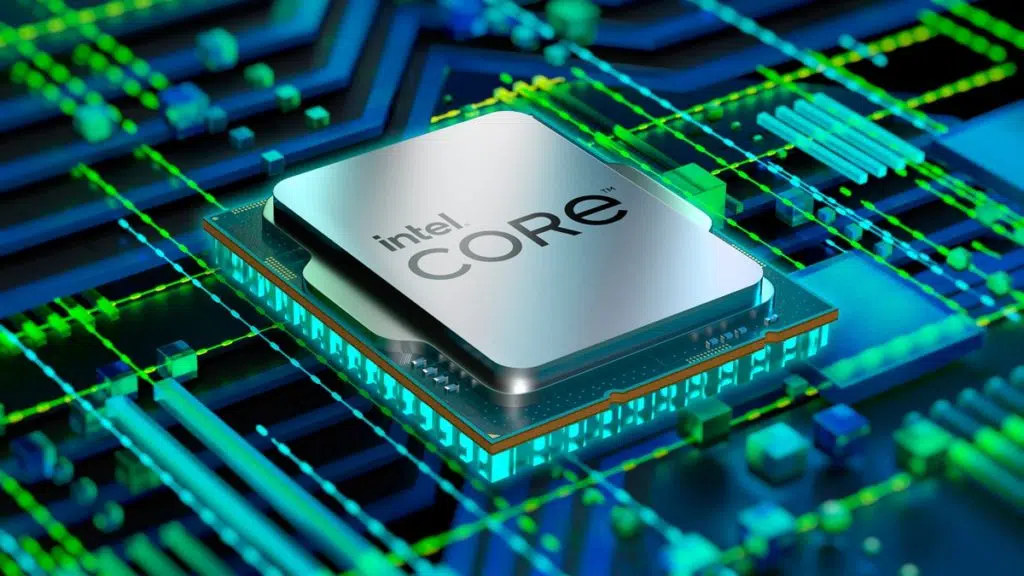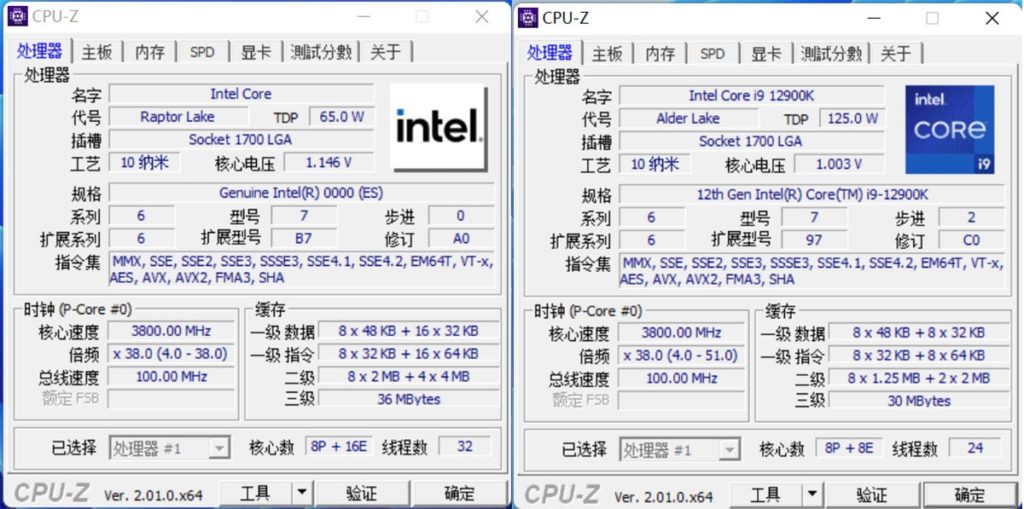
Benchmarks for an engineering sample of Intel’s upcoming 13th Gen Core “Raptor Lake” i9-13900 processor have been published online, offering insight on how the upcoming chip might compare with one of the current Alder Lake flagships. The metrics shared by China’s Expreview suggest that the Raptor Lake CPU with 8+16 core configuration will offer 20% greater multi-threaded performance than the Core i9-12900K (locked at 3.8 GHz for a fair comparison) on average, having scored considerably higher in that department in various benchmarks that include Cinebench R20 and R23. Its single-core performance falls behind that of the Core i9-12900K by around 10%, however, something that could probably be blamed on the lack of an optimized BIOS and higher TDP limit. Retail versions of the Core i9-13900 are expected to offer greater performance.
Intel Core i9-13900 vs. Core i9-12900K
| Benchmark | Intel Core i9-12900K (3.8 GHz Retail) | Intel Core i9-13900 (3.8 GHz ES) | 13900 vs 12900K (Difference) |
|---|---|---|---|
| Sandra 2021 (Integer) | 467.77 | 619.7 | +32% |
| Sandra 2021 (FP32) | 382.4 | 500.86 | +31% |
| Sandra 2021 (FP64) | 188.4 | 388.8 | +106% |
| Sandra 2021 (Multi-Integer) | 1674 | 1945 | +16% |
| Sandra 2021 (Multi-FP32) | 1807 | 2180 | +21% |
| Sandra 2021 (Multi-FP64) | 934 | 1116 | +19% |
| Sandra (Quad FP) | 42.47 | 52.8 | +24% |
| SuperPi Mod 1.9 | 9.406 | 9.969 | -6% |
| 7-Zip (Compression) | 97354 | 106536 | +9% |
| 7-Zip (Unzip) | 1271851 | 1705651 | +34% |
| 3DMark CPU Profile (1-Thread) | 823 | 756 | -8% |
| 3DMark CPU Profile (Max Threads) | 9284 | 11471 | +24% |
| x264 | 119.21 | 136.91 | +15% |
| x265 | 78.67 | 89.25 | +13% |
| Corona 1.3 | 7190450 | 9318220 | +30% |
| POV-Ray 3.7.1 | 550.09 | 497.44 | -10% |
| V-Ray | 14706 | 18281 | +24% |
| Blender | 143.71 | 181.14 | +26% |
| Cinebench R20 (ST) | 574 | 514 | -10% |
| Cinebench R20 (MT) | 8149 | 10203 | +25% |
| Cinebench R23 (ST) | 1494 | 1334 | -11% |
| Cinebench R23 (MT) | 21437 | 26748 | +25% |
In terms of clock speeds, the Intel Core i9-13900 Raptor Lake CPU has a clock speed that’s rated at 3.8 GHz. Do note that the P-Cores for this engineering sample ran at a base clock of 1.4 GHz and a max boost clock of 3.8 GHz (P-Cores) while the E-Cores were split with 2 clusters running at 2.8 GHz and the other 2 clusters running at 1.0 GHz so we can already see some inconsistency in the clock speeds. This is a Non-K 65W part so it will carry a much lower clock speed plus it is also an ES chip (engineering sample) so clocks are expected to be lower. The final chips are expected to yield clock speeds of up to 6 GHz.

